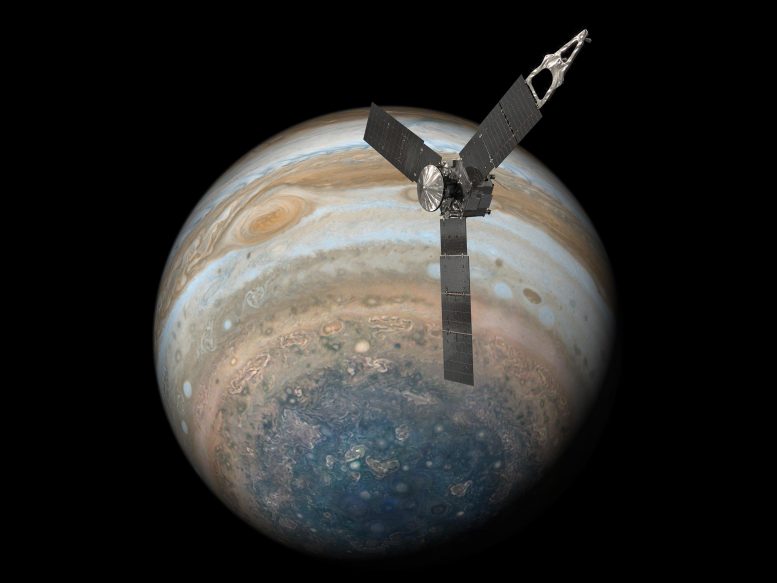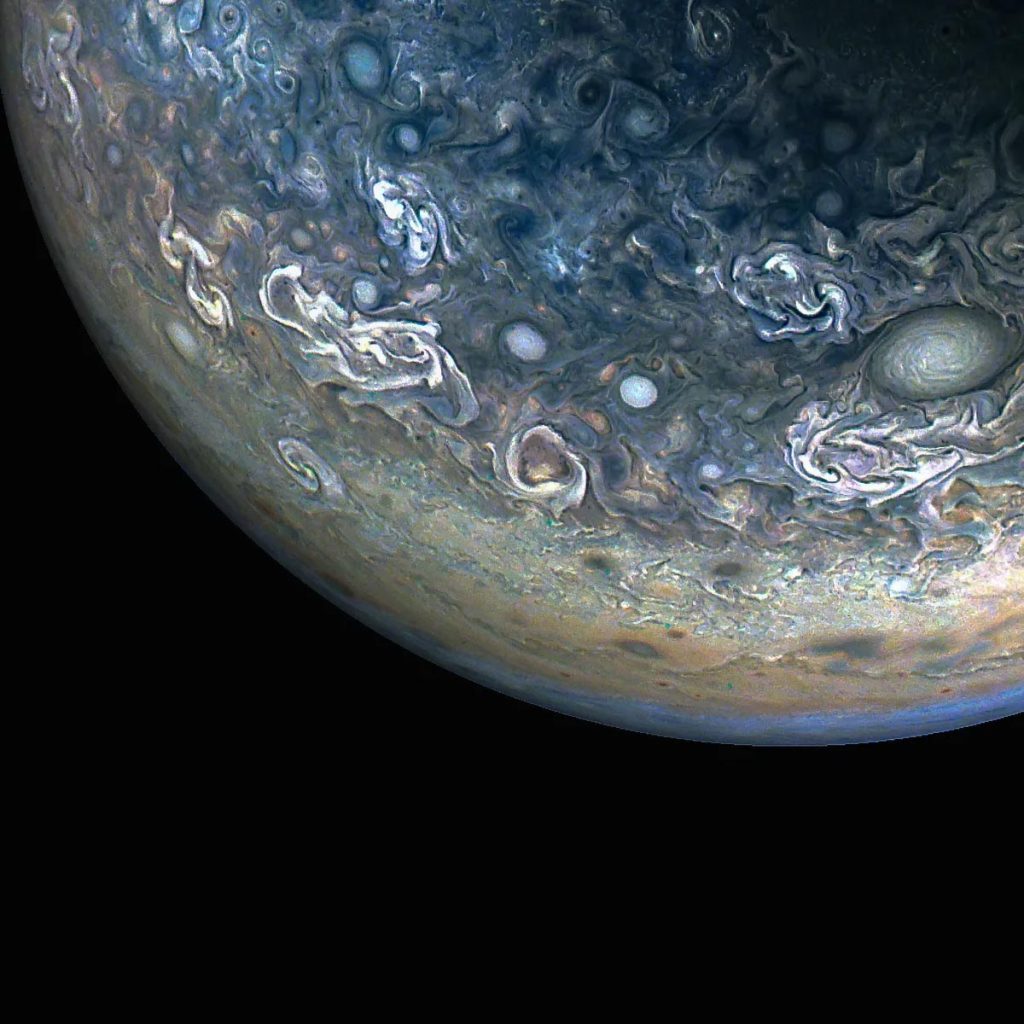On May 12, 2024, NASA’s Juno spacecraft captured detailed images of Jupiter’s northern hemisphere during its 61st flyby of Jupiter, highlighting chaotic cloud formations and cyclonic storms. Credit: NASA/JPL-Caltech/SwRI/MSSS, Image processing: Gary Eason © CC BY
Juno’s recent flybys captured images of Jupiter’s changing storms and cloud patterns.
During the 61st approach Jupiter May 12, 2024, National Aeronautics and Space Administration (NASA)This colorful image of the giant planet’s northern hemisphere from NASA’s Juno spacecraft provides a detailed look at chaotic clouds and cyclonic storms in what scientists call fold filament regions, where the zonal jets that create the familiar striped patterns in Jupiter’s clouds break up, resulting in turbulence patterns and cloud structures that change rapidly over the course of just a few days.
Citizen scientist Gary Eason created this image using raw data from the JunoCam instrument and applying digital processing techniques to enhance color and clarity.
At the time this raw image was taken, the Juno spacecraft was about 18,000 miles (29,000 kilometers) above Jupiter’s cloud tops and at about 68 degrees north of the equator.
JunoCam’s raw images are publicly available for viewing and processing into imaging products. https://missionjuno.swri.edu/junocam/processingFor more information about NASA citizen science, visit https://science.nasa.gov/citizenscience and https://www.nasa.gov/solve/opportunities/citizenscience.

This illustration shows NASA’s Juno spacecraft flying over Jupiter’s south pole. Credit: NASA/JPL-Caltech
Juno is a NASA space probe designed to study Jupiter, the largest planet in our solar system. Launched on August 5, 2011, Juno’s mission is to better understand Jupiter’s composition, gravitational field, magnetic field, and polar magnetosphere. It also aims to look for clues about how Jupiter formed, which could provide greater insight into the early solar system.
The spacecraft is part of NASA’s New Frontiers program, which aims to explore the solar system with frequent missions by medium-sized spacecraft. Juno is notable because it is powered by solar panels and will operate farther from the Sun than any solar-powered probe to date.
Juno entered Jupiter’s orbit on July 4, 2016, and has been gathering data close to the planet’s cloud tops ever since. The spacecraft is using a suite of scientific instruments to investigate, including a microwave radiometer that peers beneath the planet’s thick clouds, and an array of cameras and sensors that map Jupiter’s magnetic and gravitational fields.
Juno’s discoveries have provided unprecedented insight into Jupiter’s atmosphere, revealing the complex structure of Jupiter’s storms, bands and auroral formations. Originally scheduled to end in 2018, Juno’s mission has been extended several times to continue exploring and discovering around Jupiter.


